15 | From the Editor
An Interview with Artist Ronan Cahill
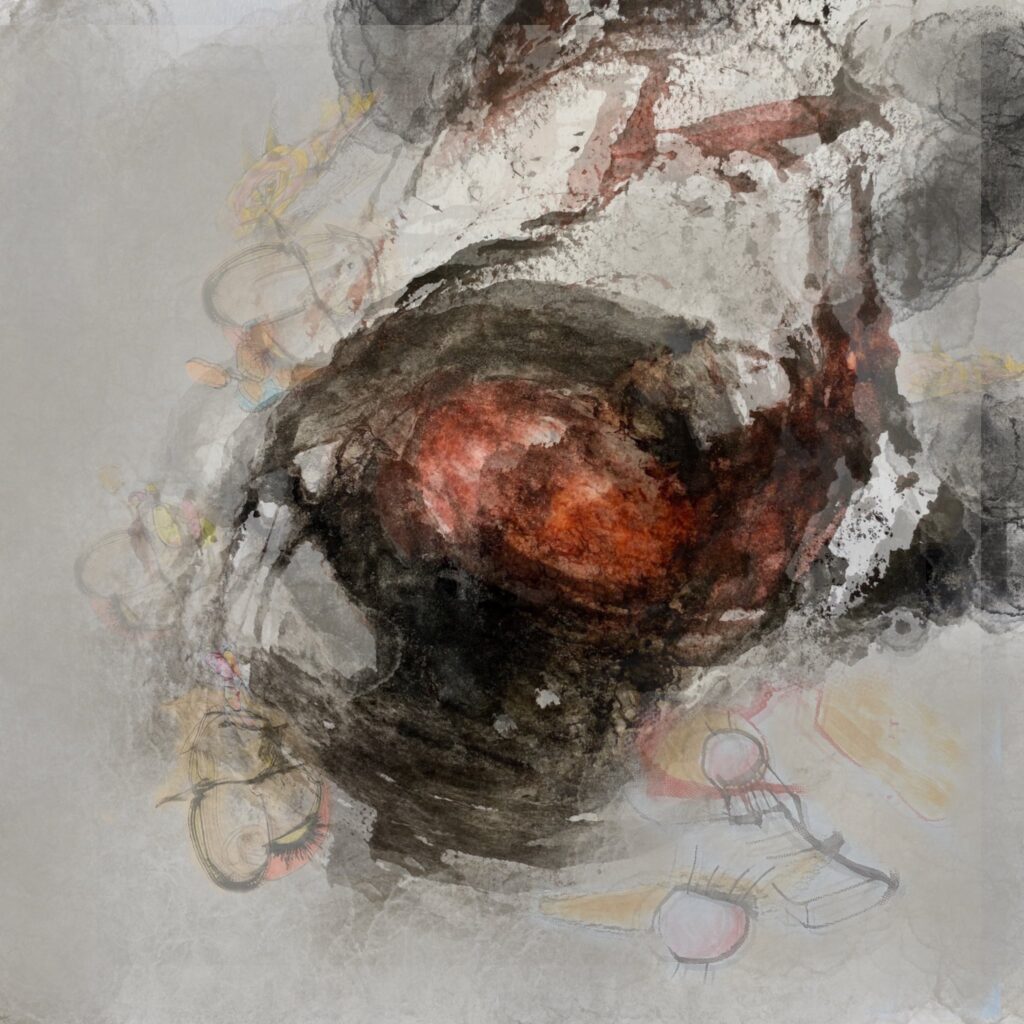
Sloane: Please describe your artistic process to us.
Cahill: I start always from nothing, a blank page. I come to the page without preconceptions about what will happen (this defeats all artist’s block and negative thoughts that I have no ideas today. It is my job to show up only). The first layer is the wild layer. This is where the excitement comes from. Colours blend and mix. I have studied colour theory, and art theories concerning composition/balance/ light/dark, warm/cool. At the moment that is within me, and comes out organically as I paint. I don’t consciously think so much in the process itself. It is my job however to create a painting that gives the viewer a dynamic interest. I try to induce a sense of movement. With each layer, I see something different within the piece, and the piece drives itself in a different direction. The closer to the end of the process I start to introduce details. I get quite lost in the works, time disappears, and there is just me and the page. Sometimes it seems like I have miles to walk with the work, but suddenly out of nowhere a minor detail added resolves the piece. I spend a lot of time just standing back and staring into the work. I then know which way to go next.
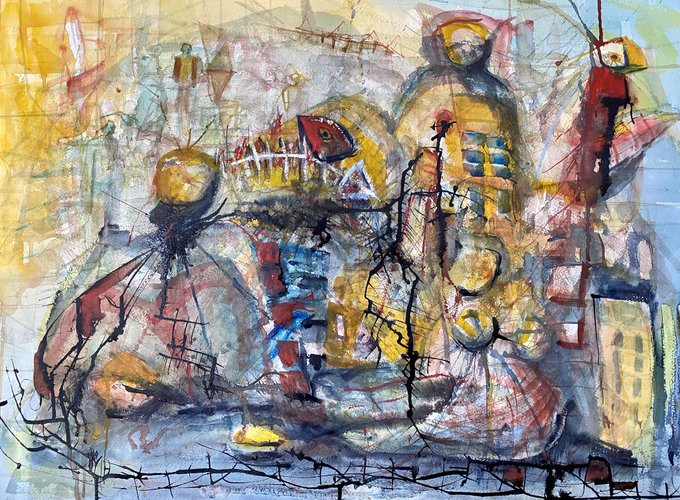
Sloane: I recall you stating that you usually work late into the night, letting your subconscious take over your creative process as exhaustion sets in. Am I understanding that correctly?
Cahill: Yes, but it is my abstract sketchbook work that is done this way, and also my digital constructs that are carried out late at night. My painting tends to be during the waking hours, but the abstract sketches then influence the daytime painting.
Sloane: If so, do you think that this approach unlocks and unblocks creative pathways that would otherwise not be activated?
Cahill: There are depths hidden within us all on a subconscious level. In these depths, there are truths our waking selves don’t know. I am quite excited about my abstract sketchbook range. This is always done late at night while I am so tired I should be sleeping. I wake up in the morning and I look in the sketchbook. It gives a more primal earthly feel. Most of the time I can’t remember drawing the works. It’s like an abstract lobsterpot just recovered. It was with this process that I happened upon the famous Sci-Fi abstract works. I didn’t realise it at the time, but once pointed out there is no denying that it is Sci-Fi like.
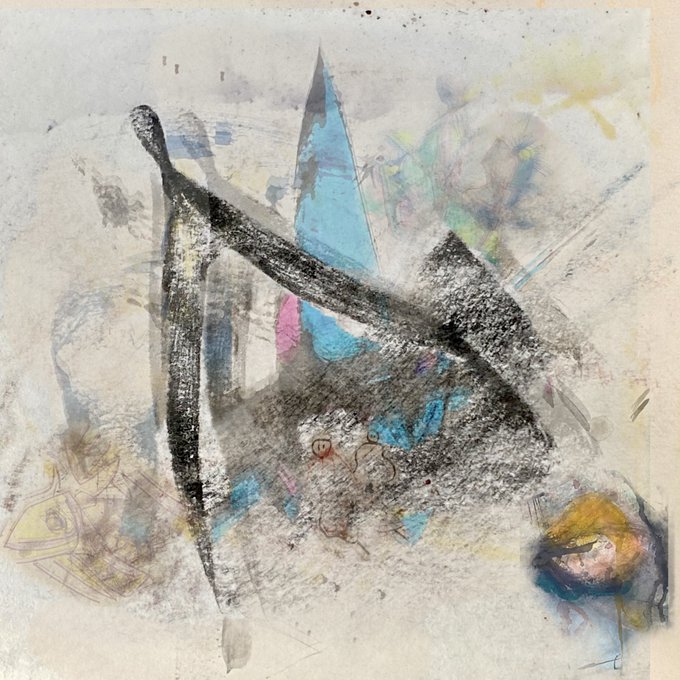
Sloane: How did you happen upon this approach?
Cahill: I have read a lot about the Bauhaus guys and Klee and Kandinsky. I also did a workshop years ago with the abstract artist Alfredo Bytautus.
Sloane: You provided the cover art (which then placed 2nd in the 24th Annual Critter’s Readers Poll) and all of the interior art for the debut issue of The Flying Saucer Poetry Review, and some of the interior art for the debut issue of The Space Cadet Science Fiction Review. Wonderful abstract work that I perceived as being science fiction art but that you had not intended as such. Do you go into working on a piece with a particular thought in mind as to what it is or should be in its abstraction or is yours an entirely organic approach that creates a piece through a process that is unconstrained or guided by parameters or intentional outcome?
As artists we are illusionists . . .
Cahill: I do not tend to come to the blank page with any preconceptions. I am an artist. I create things from nothing. As the initial layers go on, they influence each other. The previous stroke has an influence, on the next one and so on. I like to think that with each layer I try to bring some level of balance to the next one, and so on. The balance is compositional, it is line versus colour, it is warmth versus coolness, it is a balance of dark versus light. All going back to the chaos of the first layer. As artists we are illusionists, and I strive to create the illusion of depth on the two-dimensional surface continuously.
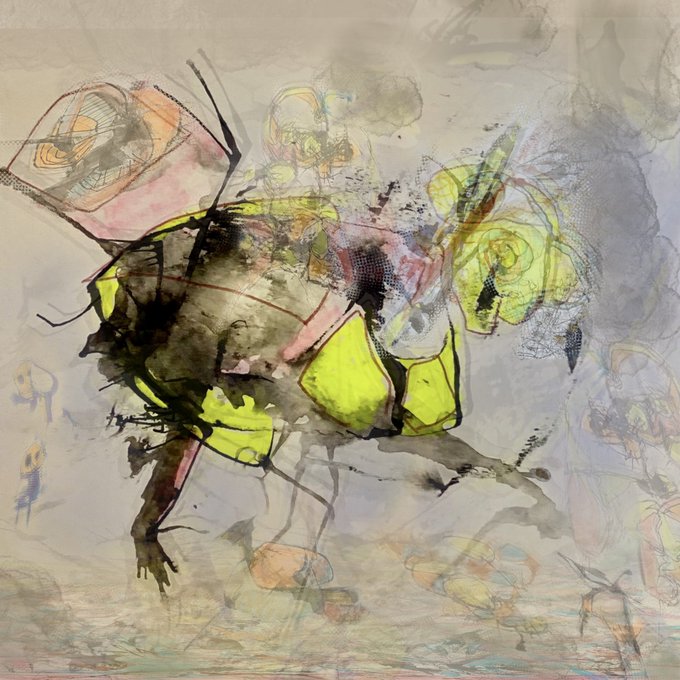
Sloane: What inspired you to become an artist?
Cahill: Art has always been inside. My paternal grandad sketched landscapes in rural Offaly. My mum’s family have had artists going back generations in Dublin, and a first cousin that was a famous sculptor in Cork. My mum is a fine oil painter herself. So that normalised it a bit. I could never just cut it out, it is here to stay. It is who I am. I cannot escape it. If I am not painting, then I am thinking of painting. I see things and ideas form. I am torn sometimes between the representative and the abstract but lately the abstract is winning. I must paint this inward sense of what I feel about my surroundings rather than painting just what these eyes see. I don’t know, it is something that got in my system as a child and the desire to be an artist never left me.
Sloane: Any particular artistic influences that you would point to?
Cahill: My artistic influences were many, from music album covers growing up to artists that the young Ronan was inspired by. Schiele, Munch, Picasso and Van Gogh. Jack Yeats. Basquiat was a huge influence when I was growing up in inner city Dublin in the 90s. There was a confidence, a boldness, and immediacy to his works. He was not afraid to get to the point. I read a lot on art and artists. I have always loved Scottish Artist Joan Eardley’s work. The wild abstractness of her landscapes is amazing. Later influences are Alvaro Castegnet and Aine Divine (for the boldness of watercolour), the abstract paintings of Tracy Emin, portraits of Jenny Saville, and the huge expansive pieces by Julie Mehretu.
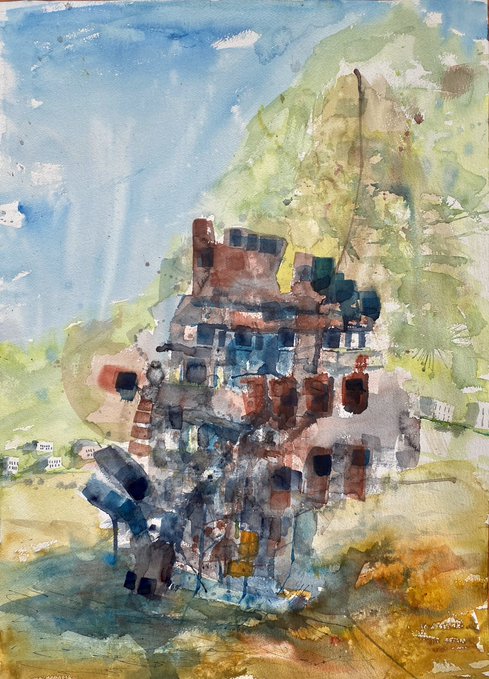
Sloane: Do you run on pure inspiration in doing your artwork or do you push yourself to create even when you don’t feel particularly inspired for the sake of discipline?
Cahill: It is our job to show up and paint regardless of how we are feeling. The painting process then reflects the colour of that particular mood. Everything is an inspiration whether negative or positive.
Sloane: Have you exhibited any of your work lately?
Cahill: I don’t have current exhibitions. I am concentrating on building up a body of work that nobody can argue with.
Sloane: I know that you were dabbling in the creation of NFTs. What has been your experience?
Cahill: I am watching that train depart. I am not a tech guru, I dabbled in but to be honest I don’t fully understand the concept, nor the way to do it properly. I dipped a foot in it with Open Sea, but still don’t trust it, or the crypto currency thing and am weary of folk promising to manage it for me. I wish I was cleverer with this side of things, but I remain cautious. As long as I have a way of creation there is inspiration. I am disciplined but once I start marking the page the inspiration ship is sailing.
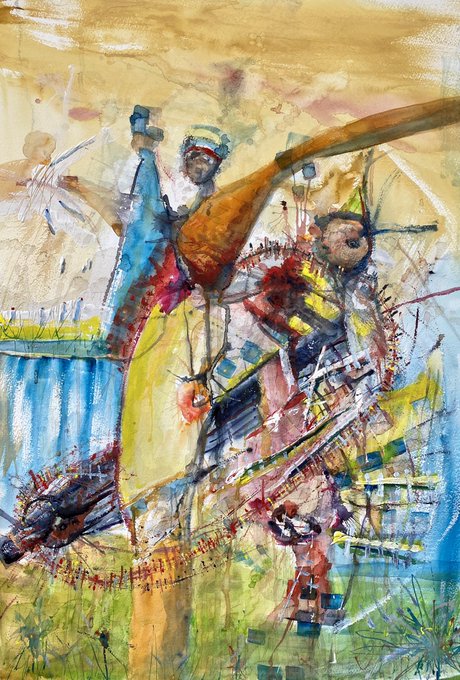
Sloane: In life’s big picture, how important is creating art to you – what motivates you to paint, draw, create?
Cahill: Without Creativity I am nothing. I would dive into a deep depression. I need Art. Art is everything to me.
Sloane: What do you hope to achieve as an artist?
Cahill: The Art itself is enough for me. A body of work I can lay down at the end of my life, and say I Was Here.
Sloane: What is your vision and philosophy?
Cahill: When it comes to painting, I use it as a tool of self-discovery. I get lost inside the time/space/moment/ colour/texture/line/ wash of it all. Minutes can pass or hours can pass. And then something taps me on the shoulder and says, you are finished, Ronan. I look at that painting and my ambition is to follow it with a painting that learns something from the previously completed work. It is a path of personal evolution and there is no way to know where it will lead in the end. It is a path that will end with death, I guess.
I used to think I did three or four separate art things. I don’t, they are all the same. Creation. Full stop.
When I was young and in my 20s, I had all the time in the world, I was living life, I had a dream of becoming an artist that never died, but I wasn’t ready for the obstacles adult life throws at the artist to stop the artist in their tracks. I wasn’t serious about it enough then to die for it. Now I am older I am suddenly aware that we do not know how long any of us have to live. I don’t necessarily want to become rich or famous, I will settle for leaving behind a body of work that is important to me. To this end I do not let a day go by without creating at least one image, whether its drawings, paintings, or digital art.
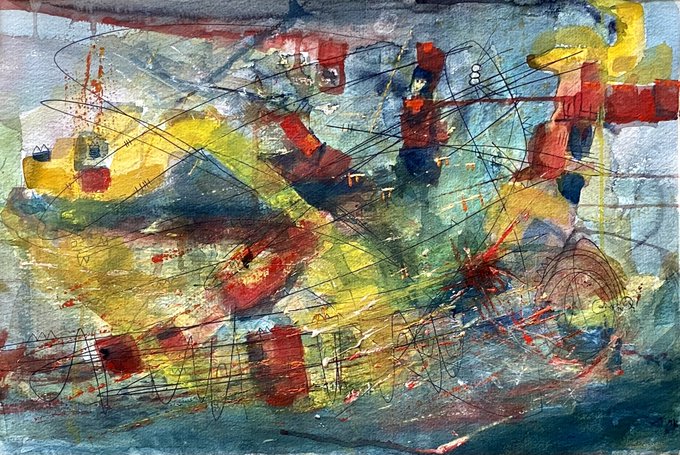
For me there is no artist’s block, as long as you promise to show up it will happen. I haven’t been to university to study art. I have a mechanical engineering degree. Maybe being told I couldn’t study art at school, reinforced it more in me that I needed to be an artist. But this was the early nineties in Dublin and there were no jobs. Things were bleak. My dad convinced me to study engineering instead of pursuing art, and after a few years of working I could decide myself on whether I still wanted to pursue art. At UCD I won the Society of Visual Art first prize in 1997. I have supplemented by reading all the theories of art I possibly can and watching documentaries of newer contemporary artists. I realised however that great artists do not learn to paint the way they paint, it is in them, it’s how they feel. Charlie Parker didn’t learn to play like Charlie Parker at any university, it was within.
Sloane: Anything else you’d like to share?
Cahill: Robert Montgomery the Scottish poet/neon artist had one that read, “The point of Art is to touch the heartstrings of someone you will never meet.” I think as artists that’s exactly what we are trying to do. There is an importance to leave a vague mystery in each work, to get the viewer thinking. I love when people see things I have not seen within the work. It means the painting is alive.
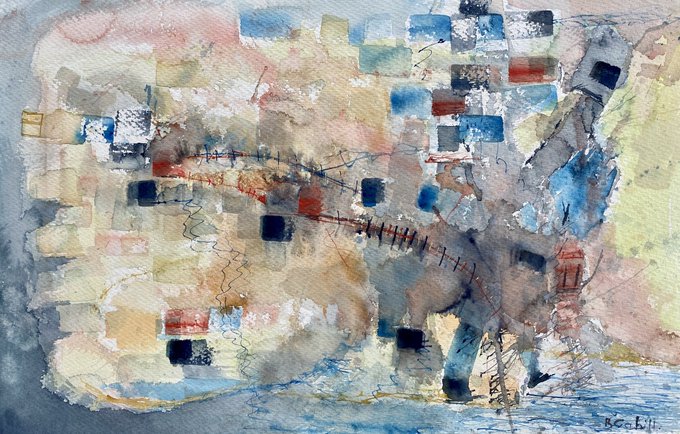
My proudest moment was my 2016 exhibition at the British Embassy in Angola. I loved that set of paintings. The people and the light of Angola I will never forget. It was a great period in my Art. On returning to the UK, I started painting landscapes, but I was really heading more and more toward the abstract even when I was seemingly painting what was in front of me. I was refusing to be a slave to what the eye could see. And so, I drifted away from the representational. I find my current process is a way of drifting into myself, far away from our adult problems, deep into ourselves. I feel inside that bubble is where I better understand colour theories, light/dark, warm/cool, composition.
Eventually nothing of the original is recognisable in the process, but it is organic it has come from me, and my creations.
I love the digital work. I don’t understand where the “Is it real Art if there is no paint?” comes from. David Hockney has had an exhibition of landscapes made on his iPad. People like Rauschenburg have used photographs in their works since the 50’s and 60’s. If I make it and print it, then it is Art. It’s a medium where I can return to photos of my paintings and drawings at various stages of the original process and give them rebirth. Eventually nothing of the original is recognisable in the process, but it is organic it has come from me, and my creations. Sometimes what was the main focus bit in the beginning gets totally fogged and forgotten as new layers get added. My digital stuff is different. Most digital art is trying to create something so smooth and polished. I am the opposite. It is my art. I don’t need to convince anyone. I create worlds and characters that are falling around in the chaos of our times. Art for me is to create a body of work that strangers will look at and see something in it that talks to their inner feelings. My art is just a search in the depths of my soul, self-discovering, trying to figure out who I am, who we are, why is it so important. Am I Scottish or am I Irish. I have spent over half my life in Scotland.
Sloane: Where can we see more of your art?
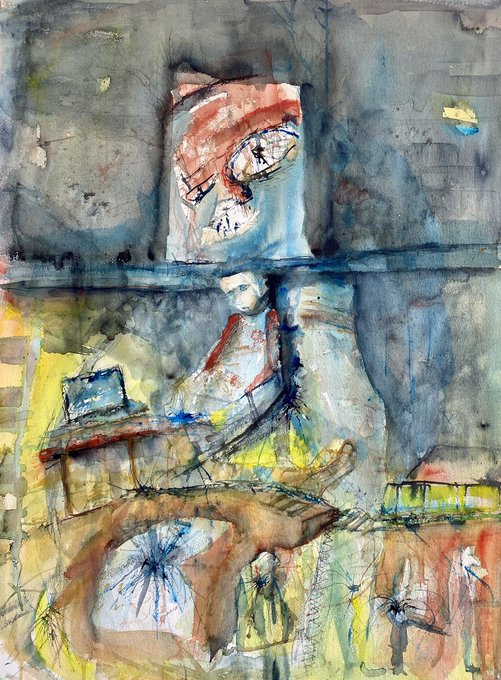
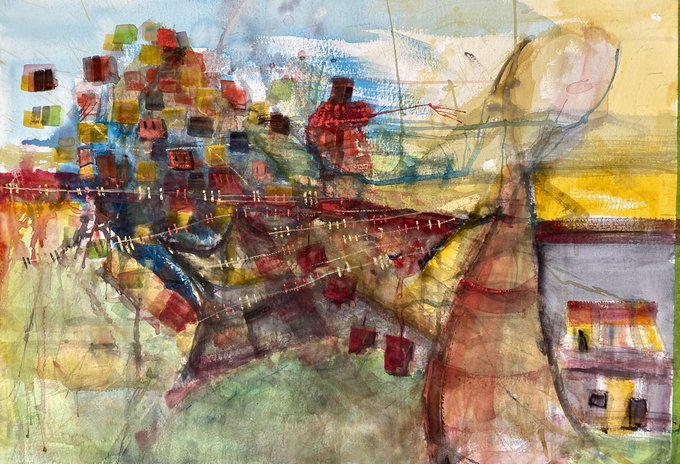
Editor’s Note: Be sure to view Ronan’s interior front cover and interior back cover art in this issue.